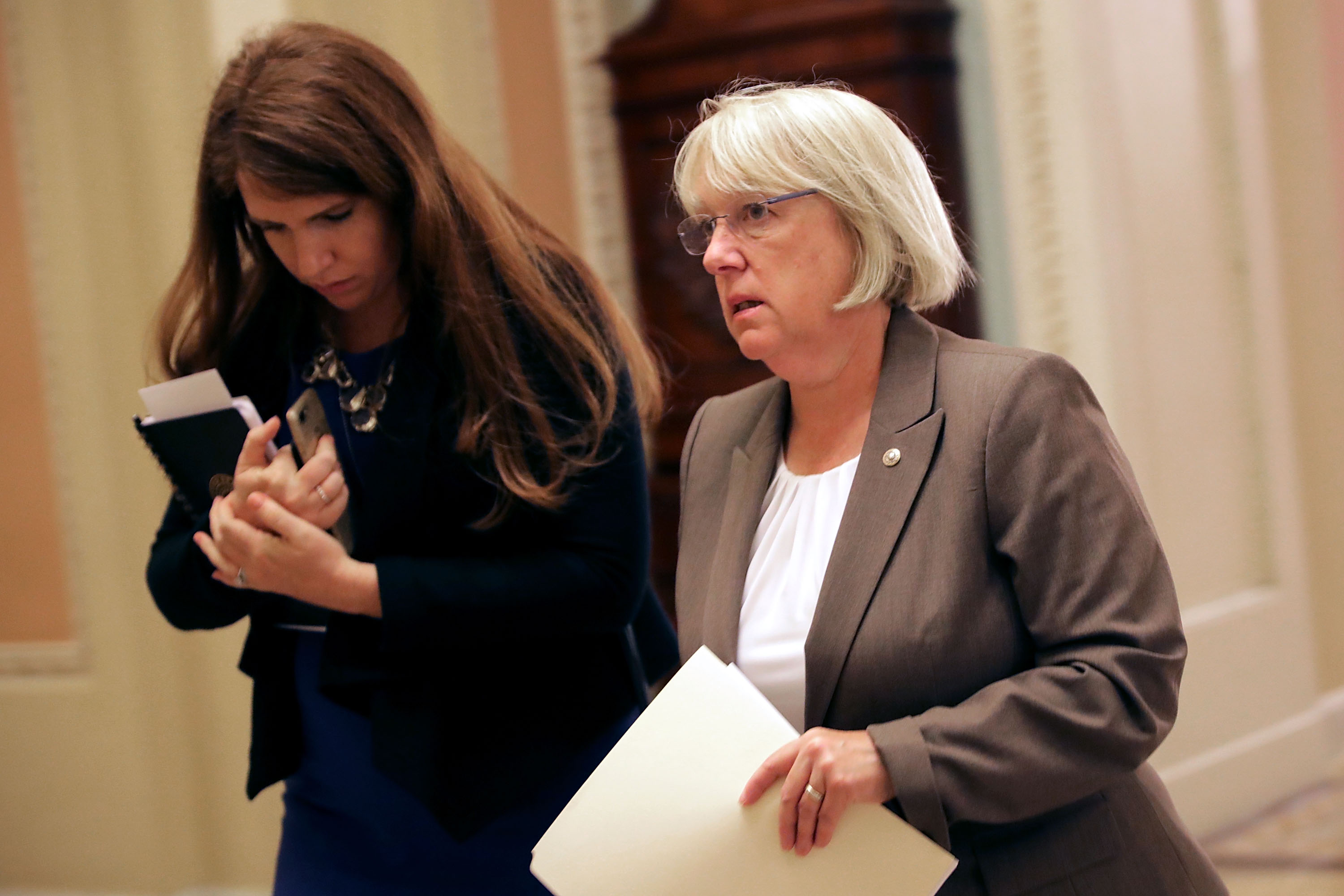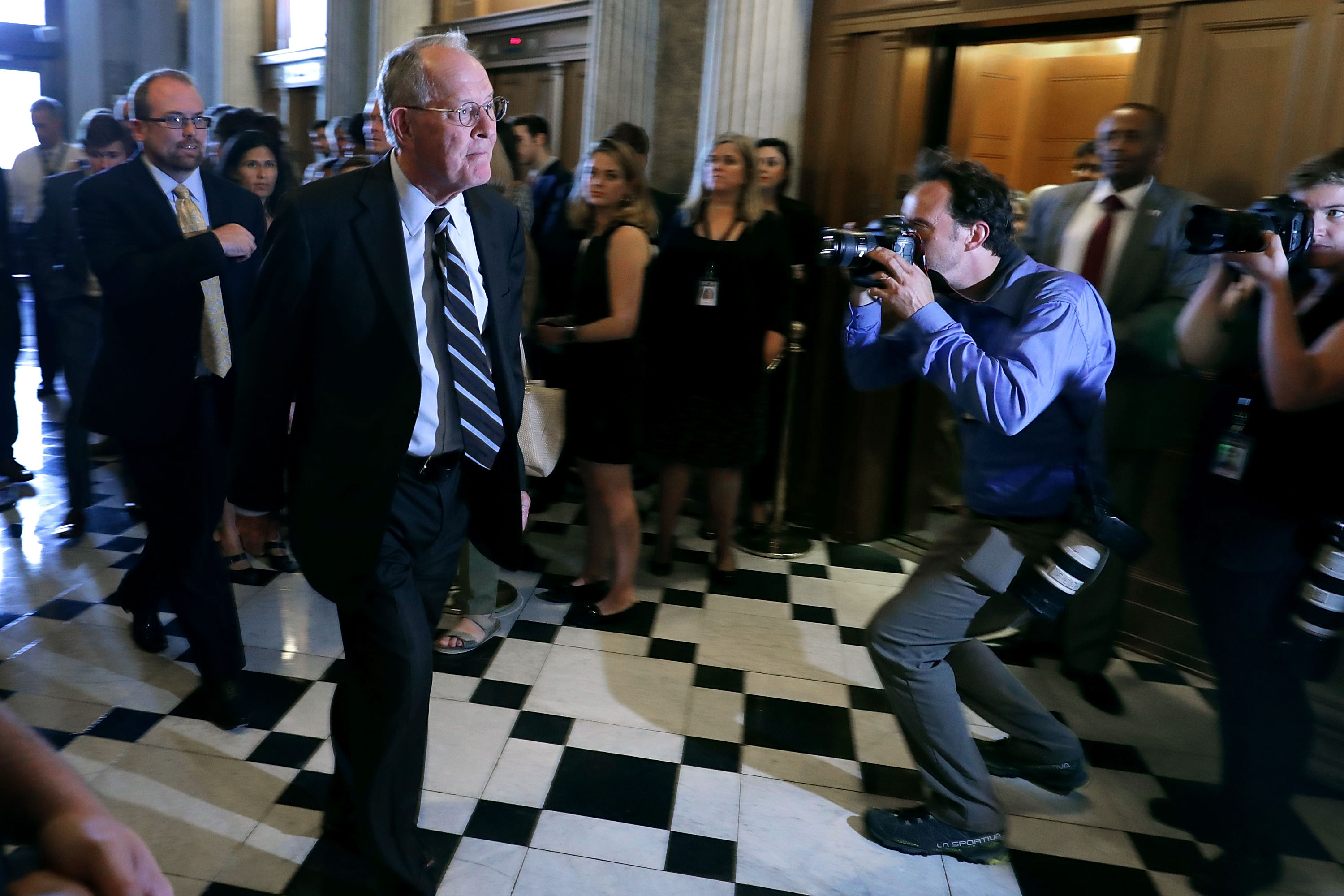
(Photo: Chip Somodevilla/Getty Images)
Over the last two weeks, the Senate Committee on Health, Education, Labor, and Pensions has held a series of hearings on how to stabilize the Affordable Care Act’s non-group markets. Insurance commissioners, governors, and other health-care experts across the ideological spectrum have trooped to Washington, D.C., to lay out for the committee—which is led by Lamar Alexander (R-Tennessee) and Patty Murray (D-Washington)—their recommendations for how to calm the jittery non-group markets.
The committee is working on a tight deadline—insurers must finalize their rates by the end of the month—and Alexander has said his goal is to work with Murray to come up with a very narrow bipartisan proposal by next week. Predictions about the entire ACA repeal-and-replace process have mostly turned out to be wrong so far, so I’ll refrain from speculating about the odds of bipartisan legislation actually being signed into law, but Murray seems hopeful. At the hearings, Alexander pointed out that 31 senators from both parties showed up to discuss the issue, which he said demonstrated “a remarkable level of interest.”
It’s unclear if Alexander’s hope is misplaced—the Hill is reporting that the Graham-Cassidy proposal is gaining momentum and may get a vote after all—but nonetheless the hearings served to highlight clear areas of bipartisan agreement, and disagreement. Here are four big takeaways from the Senate’s ACA stabilization hearings that hint at what legislation might look like:
Everyone Agrees the CSRs Need to Be Funded
This is perhaps the single biggest step Congress could do to stabilize the ACA’s non-group markets and control premium increases. Even John Doak, the (Republican) insurance commissioner from Oklahoma, who spent much of his testimony criticizing the Affordable Care Act and advocating for dramatic changes to the law, agreed that the CSR payments needed to be continued.
Several of the insurance commissioners and governors presented data on how uncertainty around CSRs is affecting premiums in their states.
“We asked carriers to identify the percentage of their rate request that is due specifically to uncertainty surrounding CSR funding,” said Julie Mix McPeak, the insurance commissioner of Tennessee. “BCBST [Blue Cross Blue Shield of Tennessee] reported that 14 percent of its overall 21 percent average rate increase is due to CSR uncertainty, while Cigna reported its impact at 14.1 percent of its overall 42 percent average rate request.”
Tennessee’s data isn’t unique. A Congressional Budget Office report released in August concluded that, if the administration did indeed stop making CSR payments, gross premiums would go up by about 20 percent in 2018 and 25 percent in 2020, the deficit would increase, and the number of uninsured would increase in the short term.
There May Be a Deal to Be Made on ACA Waivers
Alexander has specifically said he’d like the legislation to include CSR funding (a priority for Democrats) along with changes to the Section 1332 waiver process allowing for more state flexibility (a priority for Republicans). While Democrats seem unlikely to agree to changes to the law’s so-called waiver “guiderails“—which require that any state innovations provide coverage that’s at least as comprehensive, at least as affordable, and that covers a comparable number of residents—many of the experts proposed procedural changes that could garner bipartisan support. Among them: expediting the waiver process (it currently takes CMS about nine months to review and approve waivers), allowing states to pursue waivers without the approval of the state’s legislature, relaxing the requirement that waivers be deficit-neutral in each year of the waiver, and permitting states to combine 1332 waivers with Medicaid innovation waivers (although some left-leaning policy experts are concerned about this idea).

(Photo: Chip Somodevilla/Getty Images)
Several insurance commissioners and governors also suggested allowing states to use language from other states’ successful 1332 waivers. Michael Leavitt, who was governor of Utah from 1993 to 2003 and secretary of the Department of Health and Human Services from 2004 to 2009, even suggested that CMS consider issuing model 1332 waiver templates, citing a similar waiver initiative during Hurricane Katrina that allowed states to quickly apply for Medicaid coverage for new residents displaced by the storm.
“By doing so, the federal government creates national standards, but allows states to develop state solutions,” Leavitt testified. “There could be a set of standard waivers related to risk stabilization programs, re-defining marketplace products or benefits, or alternative private exchange portals.”
States currently spend significant amounts of time and money drawing up their waivers, so expediting the process would help states both red and blue experiment.
Reinsurance Programs Are Also Drawing Interest
Several of the insurance commissioners also suggested Congress consider re-implementing a federal reinsurance program. (The ACA actually did include a short-term reinsurance program, but it expired in 2017.) Lori Wing-Heier, the commissioner of Alaska, pointed out that her state’s program, which enjoyed wide bipartisan support in the state, had an immediate, positive effect.
“Prior to the enactment of the ARP, indications were that the rate filing from the single insurer in Alaska’s individual market would include an increase of close to 40 percent,” Wing-Heier testified. “After the enactment of the ARP, however, the 2017 individual rates had a moderate average increase of just over 7 percent.”
A federal reinsurance program is unlikely to be included in this package. Republicans in Congress aren’t particularly fond of the idea, terming it a bailout for insurers, and Alexander has said he won’t pursue it. But it’s worth paying attention to the concept going forward. All five of the governors who testified—including Republicans Charlie Baker (Massachusetts), Bill Haslam (Tennessee), and Gary Herbert (Utah)—expressed support for some type of federal reinsurance program.
Some Are Worried About Cuts to Outreach Funding
In recent weeks, the Trump administration has announced it will dramatically cut funding for ACA advertising and for the outreach groups that help Americans sign up for coverage (by up to 98 percent in some cases). There’s something a partisan divide here as to whether the funding is necessary. Some Republicans expressed skepticism, with Utah governor Gary Herbert saying that “[p]ublicly funded outreach programs may be useful, but should be evaluated for their effectiveness,” or outright hostility, with Doak saying Congress should completely eliminate the navigator programs.
Other insurance commissioners, however, expressed concerns that the funding cuts would reduce enrollment among the young, healthy consumers that are so vital to the quality of the risk pool. Wing-Heier, the Alaska commissioner, pointed out that many rural areas of the state lack private insurance brokers and that the navigator programs “reduce the number of uninsured citizens and maximize market participation.”
Allison O’Toole, the chief executive officer of MNsure, Minnesota’s state-based exchange expressed similar concerns. “In Minnesota, we’ve found that older and sicker individuals are the first to sign up, and if we are to have a robust and diverse risk pool to ensure affordable prices, we must put in the extra effort to bring in younger and healthier Minnesotans,” O’Toole testified. “Defunding or eliminating enrollment outreach efforts undermines the goal of creating strong risk pools across the country that lead to more affordable prices.”
ACA advertising and outreach efforts, in other words, are valuable not because they attract sick people, but because they attract exactly the kinds of people many areas of the country desperately need to sign up for insurance: the young invincibles. Without those customers, premiums could continue to go up and insurers could continue to flee.





